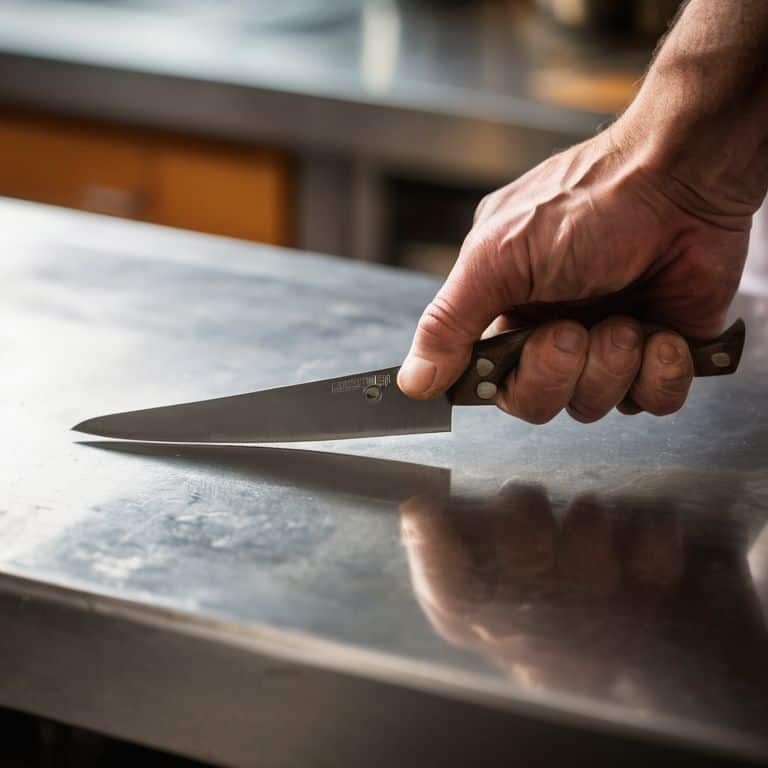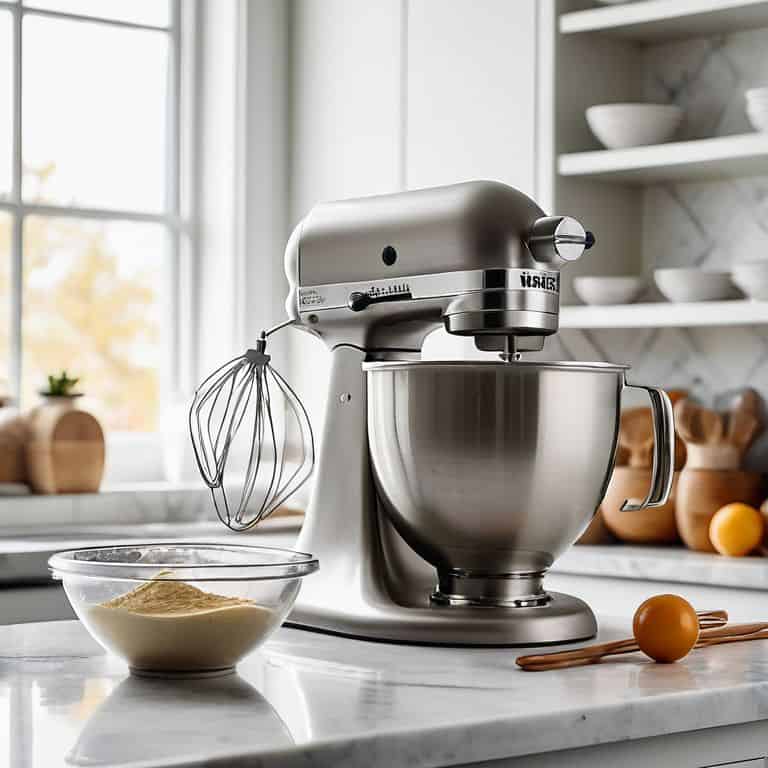I still remember the first time I laid hands on a high-quality kitchen knife. It was a game-changer, but I soon realized that keeping it sharp was a whole different story. That’s when I discovered the secret to maintaining its razor-sharp edge: what is a honing steel and how to use it. For years, I’ve seen people struggle with dull knives, and it’s often because they don’t understand the importance of regular honing. The common myth that a honing steel is only for professionals is simply not true – it’s a essential tool for any home cook or chef.
In this article, I’ll cut through the hype and share my personal experience on what is a honing steel and how to use it. You’ll learn the simple yet effective techniques to keep your knives in top condition, and I’ll give you a straightforward guide on how to choose the right honing steel for your needs. My goal is to help you invest in fewer, better things that truly elevate your cooking experience, and a good honing steel is definitely one of them. By the end of this guide, you’ll be a pro at keeping your knives sharp and ready for any culinary challenge that comes your way.
Table of Contents
Guide Overview: What You'll Need
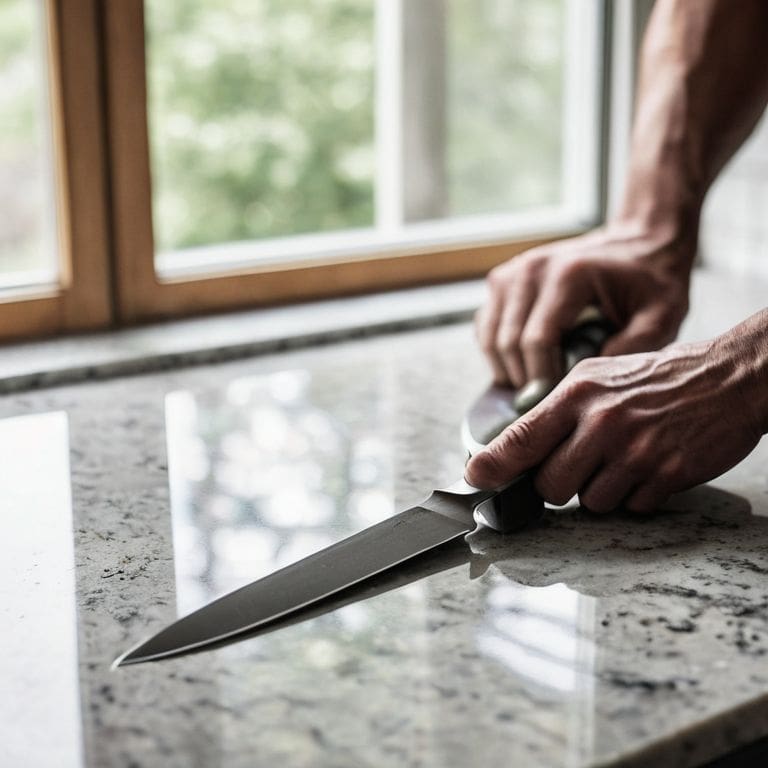
Total Time: 15 minutes to 1 hour
Estimated Cost: $10 – $30
Difficulty Level: Easy
Tools Required
- Honing Steel (also known as sharpening steel or honing rod)
- Kitchen Knife (dull knife to practice sharpening)
Supplies & Materials
- Clean Cloth (for wiping down the honing steel)
- Light Oil (optional, for maintaining the honing steel)
Step-by-Step Instructions
- 1. First, let’s start with the basics: a honing steel is a long, thin rod made of steel or ceramic that’s used to hone and realign the blade of your knife, rather than sharpen it. To begin, place the honing steel on a stable surface, with the tip of the steel facing away from you, and make sure it’s at a comfortable height to work with.
- 2. Next, choose the right angle for honing – this is typically between 20 and 30 degrees, depending on the type of knife you’re using. Hold the knife at the desired angle, with the blade facing the honing steel, and make sure your grip is firm but not overly tight, as you want to be able to control the movement of the knife.
- 3. Now it’s time to start the honing process: gently draw the knife across the honing steel, moving from the heel of the blade (the back) to the tip, using light pressure and maintaining the chosen angle. Repeat this motion several times, and be sure to keep the knife straight and parallel to the steel.
- 4. As you continue to hone the knife, pay attention to the sound and feel of the blade gliding across the steel – you’re aiming for a smooth, even motion, and a soft “whooshing” sound. If the knife is catching or scraping against the steel, adjust your angle or pressure accordingly.
- 5. To ensure even honing, it’s essential to alternate the side of the blade you’re working on: after several strokes on one side, flip the knife over and repeat the process on the other side, maintaining the same angle and pressure. This will help keep the blade balanced and prevent uneven wear.
- 6. After several minutes of honing, inspect the blade to see if it’s reached your desired level of sharpness – you can do this by visually examining the edge or by performing a simple sharpness test, such as cutting a piece of paper or a thin slice of vegetable. If the knife still needs more work, continue the honing process until you’re satisfied with the results.
- 7. Finally, once you’ve finished honing your knife, be sure to clean and store the honing steel properly: wipe it down with a dry cloth to remove any metal shavings or debris, and store it in a dry place to prevent rust or corrosion. With regular use and proper care, your honing steel will remain a trusted tool in your kitchen for years to come.
Unlocking Sharper Edges
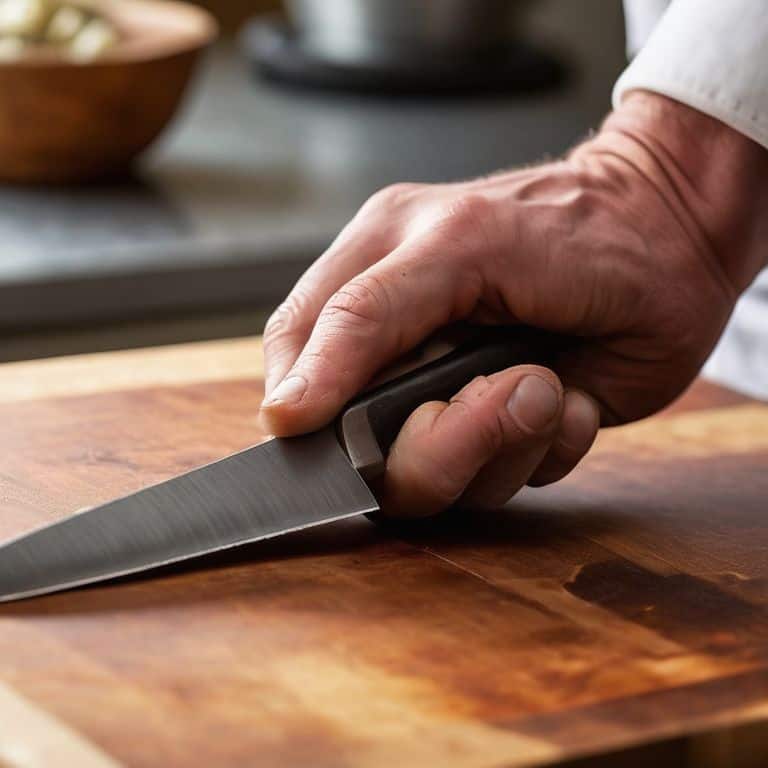
When it comes to unlocking sharper edges, it’s all about finesse and technique. I’ve found that using a honing steel in conjunction with a sharpening stone can make all the difference in achieving a razor-sharp blade. The key is to understand the difference between honing steel vs sharpening stone, and how to use them in tandem to maintain your knife’s edge.
To hone a dull knife, you’ll want to start by identifying the type of edge you’re working with. Is it a straight edge or a serrated one? This will determine the best approach for knife honing techniques for beginners. For straight edges, a simple honing steel will do the trick, while serrated edges may require a more specialized tool. Remember to always prioritize honing steel safety precautions to avoid any accidents.
By maintaining knife edge with honing steel, you’ll not only extend the life of your knife, but also ensure it continues to perform at its best. I’ve had great success with the best honing steel for kitchen knives, and I highly recommend investing in a high-quality one for your own kitchen. With a little practice and patience, you’ll be a pro at how to hone a dull knife in no time, and your cooking experience will never be the same.
Honing Steel vs Sharpening Stone Know the Difference
When it comes to sharpening your knives, the terms ‘honing steel’ and ‘sharpening stone’ are often used interchangeably, but they serve different purposes. A honing steel is designed to maintain and refine the edge of your knife, whereas a sharpening stone is meant to repair and restore a dull edge. I’ve found that using a sharpening stone is more about revival, while a honing steel is about maintenance – think of it as the difference between a spa day and a daily skincare routine.
In my experience, a honing steel is perfect for daily upkeep, keeping your knives in top condition, while a sharpening stone is better suited for when your knife needs a more intense overhaul. Worth the Hype? Absolutely, when used correctly – these tools can elevate your cooking game and make you wonder how you ever managed without them.
What Is a Honing Steel and How to Use It
Now that we’ve covered the basics, let’s dive deeper into the world of honing steels. A good honing steel is an indispensable tool for any serious home cook or chef. It’s all about maintaining that razor-sharp edge on your knives. I’ve experimented with various honing steels, and I can confidently say that a high-carbon steel or ceramic one is the way to go. The key is to find a steel that’s durable, resistant to wear, and designed with ease of use in mind. When used correctly, a honing steel can extend the life of your knives and make cooking a whole lot more enjoyable.
Sharpen Up: 5 Essential Tips for Mastering Your Honing Steel
- Hold it just right: Grip the honing steel firmly, but not too tightly, with the blade facing the direction you want it to sharpen, and the steel at a 20-degree angle – trust me, it makes all the difference
- Choose your steel wisely: Not all honing steels are created equal, so opt for a high-carbon steel or ceramic one for the best results – your knives will thank you
- Don’t overdo it: A few smooth, light strokes are all you need to realign the edge, so avoid applying too much pressure, which can damage the blade or the steel – patience is key
- Cleanliness is next to sharpness: Regularly clean and maintain your honing steel to prevent the buildup of metal particles and debris, which can affect its performance – a simple wipe down with a dry cloth will do
- Practice makes perfect: The more you use your honing steel, the more comfortable you’ll become with the process, so don’t be discouraged if it takes a few tries to get the hang of it – with time, you’ll be a pro at sharpening like a chef
Key Takeaways for a Sharper Edge
I’ve learned that a honing steel is an essential tool for maintaining razor-sharp knives, and using it regularly can make a significant difference in cooking performance and safety
Understanding the difference between honing and sharpening is crucial – honing steel is for realigning the blade’s edge, while sharpening stones are for removing metal and creating a new edge
By incorporating a honing steel into my kitchen routine and combining it with a sharpening stone when necessary, I can ensure my knives stay in top condition, leading to better cooking results and a more enjoyable culinary experience
The Honing Truth
A honing steel is not just a tool, it’s a gateway to a sharper, more refined you – it’s about mastering the art of precision, one subtle stroke at a time.
Julian Grey
The Cutting Edge: A Final Verdict
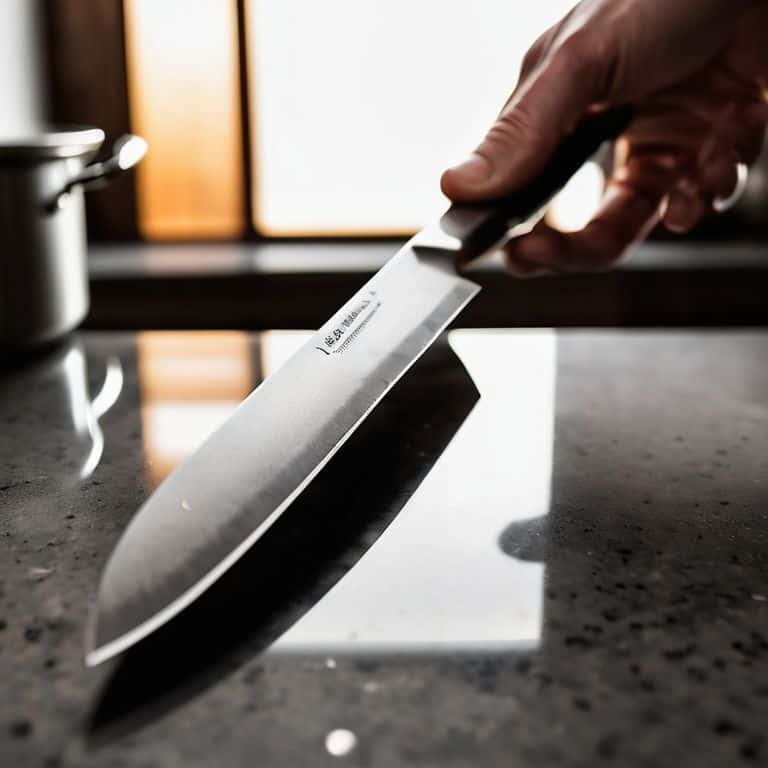
As we’ve explored the world of honing steels, it’s clear that mastering the art of sharpening is a game-changer for any home cook or chef. From understanding the difference between honing and sharpening to learning the step-by-step process of using a honing steel, the journey to sharper edges is both rewarding and accessible. By recognizing the value of a well-maintained knife and the role a honing steel plays in achieving that, you’re not just improving your cooking experience, but also investing in a longer-lasting and more efficient kitchen tool.
So, as you embark on your own sharpening journey, remember that the pursuit of perfection is what drives innovation. Don’t settle for dull knives and mediocre cooking experiences. With a honing steel by your side and a bit of practice, you’ll be cutting like a pro in no time. The world of culinary delights awaits, and it starts with the sharp edge of a perfectly honed knife.
Frequently Asked Questions
How often should I use a honing steel to maintain my knives?
Honestly, I hone my knives after every few uses – it’s all about maintaining that razor-sharp edge. For heavy users, daily honing is a must, while occasional cooks can get away with weekly touch-ups. Worth the Hype? Absolutely, a well-honed knife is a total game-changer in the kitchen.
Can I use a honing steel on any type of knife, or are there specific types that require different maintenance?
Not all knives are created equal, my friend. While a honing steel is versatile, it’s best suited for high-carbon stainless steel, straight-edge, and serrated knives. However, for ceramic, Damascus, or extremely delicate blades, you’ll want to explore other maintenance options to avoid damage. Worth the Hype? Yes, but know your knife’s limits.
What's the difference between a honing steel and a sharpening steel, and when should I use each?
Honestly, the terms are often used interchangeably, but I make a distinction: a honing steel is for maintenance, honing the edge, while a sharpening steel is for, well, sharpening – rebuilding the edge from scratch. Think of it like a quick touch-up vs a full-on makeover.
